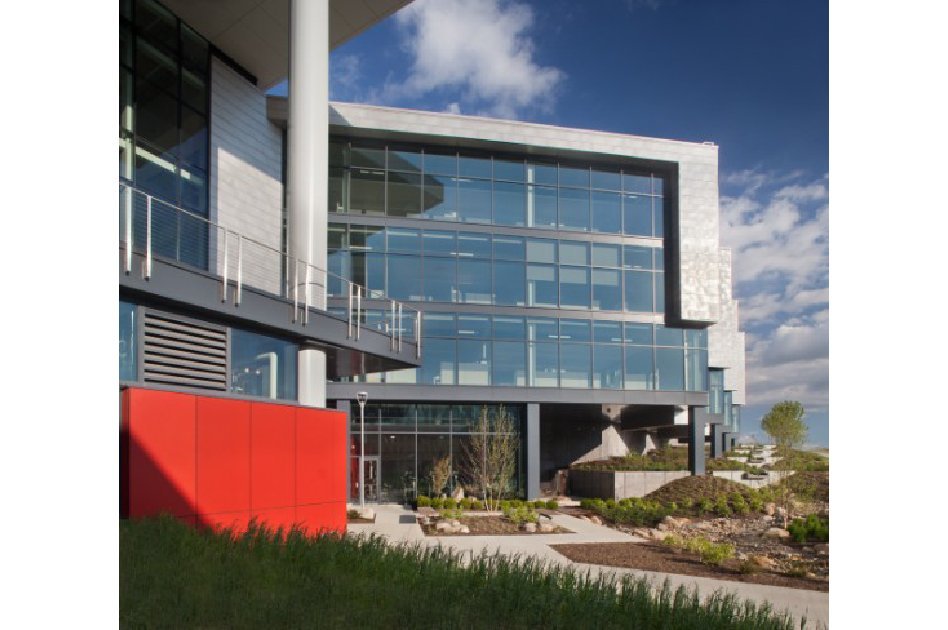In 2005 Bridgestone began looking at renovating an existing building for their Technology Center and determined after studying the parameters that it was not cost effective to retrofit and therefore decided to look for a new site within their campus. The existing building that they had hoped to use, the Harvey Firestone Building, is still in service at this time for making racing tires. The new Technology Center is located on the corner of South Main Street and Firestone Boulevard in Akron, Ohio on the existing Firestone campus. Across the street from the new Technology Center on South Main is the location of the new parking structure that has just been completed. It will be accessible to the new Technology Center via an enclosed foot bridge.
Bridgestone merged with Firestone in 1988 to form a truly global company. Harvey S. Firestone founded Firestone in 1900 and his many innovations made tires what they are today. Bridgestone was founded in 1931 by Shojiro Ishibashi whose name in English means stone bridge and he chose Bridgestone as his company’s name. At that time it was the largest investment in an American Company ever by a company from Japan.
Among Firestone’s innovations is the dismountable rim, for the first time making it possible for drivers to change their own tires, the first angular non-skid tread which made automobiles easier to control and from 1920 – 1966 every winner of the Indy 500® used Firestone Tires.
The new technology facility is four stories high and 262,000 square feet. The building houses the research laboratory for testing newly advanced tire compounds and the prototype and quality control engineering offices as well; the project is designed to reach LEED® Gold Certification. Sol Harris/Day Architects, North Canton, Ohio, was chosen for the project and worked to create an inspiring new building created to maximize natural light, thus the saw-toothed design. “Part of our goal was to develop spaces that are inspiring and attractive to young people thereby improving job satisfaction as well as employee retention. The building houses two functions, the testing laboratory and the offices,” explained Bob Marshall, Project Architect.
The new Bridgestone campus is accessed through a drive that snakes through the facilities and leads to the statue of Harvey Firestone in the middle near the main entrance. The labs and testing facility are located in the north wing on the third and fourth floors; the offices are in the north and south wing on the second floor and utilize all of the third and fourth floors of the south wing.
United States Green Building Council Leadership in Energy & Environmental Design, USGBC LEED®, promotes a whole building approach to sustainability by recognizing performance in key areas. The criteria include the following categories: sustainable sites, water efficiency, energy and atmosphere, materials and resources, indoor environmental quality, locations and linkages, awareness and education, innovation in design and regional priority which changes by location. To achieve Gold LEED® status requires meeting criteria in those areas.
The building is clad in InvariMatte® stainless steel; developed by Contrarian Micro Textures. It has a matte finish that looks like silk metal. Stainless steel garners LEED® points for recycled content and more if fabricated within 500 miles of the project.
“Zinc was first considered for the building, but zinc develops a patina, and a consistent color was desired, so we looked at anodized. Upon review, we thought the anodized finish was too reflective and hard looking. Contrarian’s team met with the architect and the owners and they loved InvariMatte® with its soft reflection, changing with the weather and time of day,” explained Rick Kruger, Firestone Director of Technical Services.
“The stainless steel on the southwest side will fight the heat gain and reflect the heat,” explained Matt Sutter, AIA, LEED® AP and Principal in Charge at Sol Harris/Day. On the atrium walls, the stainless steel panels make the transition from interior decorating to exterior sheeting. It visually opens the view and expands both the indoors and the outdoors making the inhabitants feel part of the larger environment.
The Bridgestone Technology Center has a vegetated roof which has a major impact on the building, it absorbs water, offers insulation, reduces the heat island effect and is a nice place to take a break or have lunch. There is a cistern for runoff that holds 35,000 gallons which will be used for irrigation. Bio-swales take parking lot runoff into an area that percolates down into the ground; the water flows over walls and more walls and is almost a waterfall feature. Native plants are used as well in the landscaping and all this has an immense impact on the storm system.
The Technology Center is the first to use a new filtered hood exhaust system in the testing labs; it was designed by Erlab, a French company. Heating and cooling are re-circulated to areas of the building that need it, eliminating areas that are overly warm or cool. This offers big savings in heating and cooling costs.
The northeast side of the building is open with windows providing natural light, on the east, west, and south there is a roller shade system that filters direct light. Day lighting sensors turn off lights when natural light is plentiful. Part of achieving LEED® points includes maximizing natural light and outdoor views. The building’s open office space style allows a view from one wing to the other.
The stainless steel cladding was fabricated by Firestone Building Products in Minnesota and installed by The Geist Company, Cleveland. “The installation of the metal cladding went well, although the corners were tricky, and we worked with the architect to solve the design issues,” explained Thom Geist, President of The Geist Company.
The company hosted a grand opening celebration with local, state and federal officials as well as other distinguished community guests on April 11, 2012.
